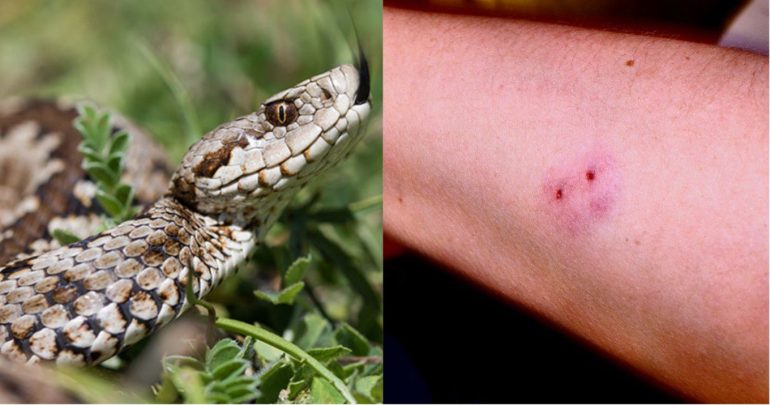Snake and summer go together, that's why below there are instructions for first aid after a snake bite as well as the symptoms.
There are over 3500 species of snakes, but luckily only about 200 are poisonous. For Greece and Cyprus, the most well-known poisonous snake is the viper. Fortunately, less than 10% of victims of poisonous snakes die. What are the symptoms of a snake bite and what should one do?
When poisonous snakes bite a person, they leave some in their body poison. This poison usually interferes with the nerves, causing the person to stop breathing, but it can also cause cell destruction and blood clotting disorders.
What are the symptoms?
Within a short time after the bite, the patient feels intense pain that gives the impression that the area with the bite is burning and at the same time presents intense local swelling. Over time the entire leg swells (if the bite is on the leg) and begins to show necrosis. The child may experience nausea, vomiting and profuse sweating. He may also feel tingling or numbness in the lips and head.
In very serious cases, the child may experience general bloating, heart arrhythmias and very soon death. How serious the condition is is directly related to the area where the bite occurred, the type of snake and how extensive the bite is. If the poison attacks the nerves, the patient will experience drowsiness, muscle weakness, muscle paralysis and eventually die from the paralysis of the muscles responsible for breathing.
What should you do immediately after a snake bite?
The ideal would be to see the snake and recognize whether it is poisonous or not. So if it's not poisonous, you don't do anything. But since you will rarely see the snake and we usually don't distinguish the poisonous from the non-poisonous, it is good to follow the following rules first aid:
• Immobilize the patient immediately. THE immobilization of the patient reduces the contractions of the muscles and thus the promotion of the poison in the vessels (blood and lymph) is reduced.
• Bind the extremity with the snake bite, at a point higher (central to the body), so as to limit the flow of blood through the veins. Veins carry blood from the various organs to the heart. CAUTION do not tie it too tightly. Blood must circulate within the arteries, otherwise oxygen will not be delivered to the bite area and the condition will worsen.
• Do not place ice at the site of the bite. You may cause more damage.
• Don't waste time tearing with it knife the area and absorb the poison. It has not been proven to help. Better take the man to the nearest hospital.
Once you arrive at the hospital the following actions will most likely be done:
• To be placed term so that there is easy access by the doctor for quick administration of medicines.
• They will be sent examination blood and urine.
• They will vaccinate the child for tetanus.
• They will probably sponsor antibiotics.
• Whether a specialist will be assigned antiofic serum the doctor will judge it according to the child's condition.
• Depending on the symptoms that will manifest, the doctor will administer them appropriate medications to stabilize the child's vital signs.
via: Enimerotiko
